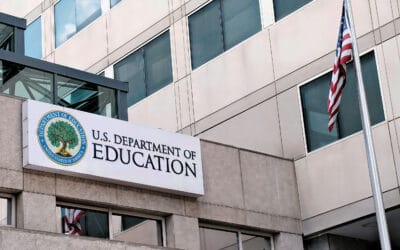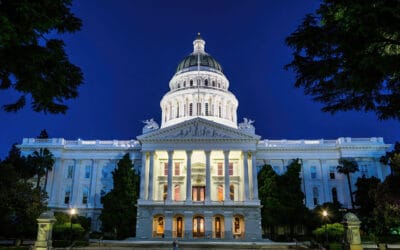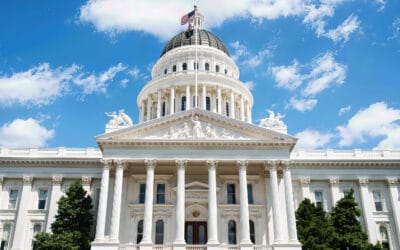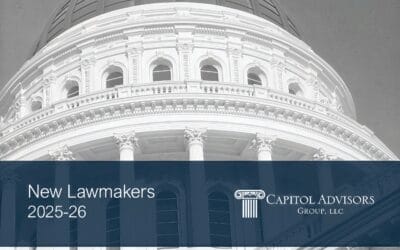Executive Order to Begin Dramatically Reducing the Department of Education
President signs executive order to begin dismantling the U.S. Department of Education. What it means for federal programs, funding, and public schools.
The Governor’s K-12 Education Budget Trailer Bill Proposals for 2024-2025
A detailed summary of Governor Newsom’s latest K-12 budget trailer bills, covering funding proposals, education reforms, and key policy shifts expected in 2024-25.
Federal Funding Freeze Raises Alarms for Student Support Programs
The Trump Administration’s funding freeze threatens programs supporting students and families. Legal challenges are expected as education leaders assess the impact.
State Board Advances 2025 Steps in Accountability Reform and Curriculum Development
The State Board advanced its 2025 education agenda with new accountability plans, curriculum updates, and a Portrait of a Graduate framework.
Ten Education Issues to Watch in 2025
California education leaders face a complex year ahead as federal-state tensions rise and the Legislature welcomes 37 new lawmakers. Key issues include declining enrollment, staff shortages, immigration enforcement, and the future of school funding. This post outlines 10 major challenges and opportunities to watch in 2025.
Governor’s 2025-2026 Budget Announced
The Governor has unveiled the proposed 2025–2026 state budget, outlining key investments in public education and student support. Highlights include a $7.5 billion increase in Prop 98 funding, bringing the total to $118.9 billion, and a 2.43% COLA for the LCFF and select programs. One-time funding includes $1.8 billion in Discretionary Block Grants, $500 million for Literacy and Math Coaches, and nearly $380 million for Learning Recovery. The proposal also allocates $300 million for teacher recruitment and supports full implementation of major initiatives like ELOP, Universal TK, and Universal Meals. The budget also introduces new developments related to the Master Plan for Career Education.
New Lawmakers 2025 – 2026
Meet the new lawmakers shaping California’s education policies in 2025. This post highlights legislative changes, partisan control, education backgrounds, and what to expect from new committee assignments.
Changes in Law 2023- Curriculum and Instruction
Stay informed on 2024’s educational shifts: Dive into the impact of AB 1078 on diversity and the renewed emphasis on cursive writing.
Changes in Law 2023 – Early Childhood
Discover the latest in California education: 2024 brings significant updates in early childhood care and transitional kindergarten.
Changes in Law 2023 – Governance and Operations
Explore California’s 2024 legal updates in education: SB 274’s approach to student discipline, governance bills, and more.
Changes in Law 2023 – Human Resources
California’s 2024 human resources legislation brings significant wins for schools in HR policies, labor relations, and employee rights.
Changes in Law 2023 – School Facilities
California delays school facilities bond to 2024, focusing on Behavioral Health Services Act, with updates on all-gender restrooms requirement.
Changes in Law 2023 – School Finance
Explore the impact on school finance in California: Revised attendance policies, a substantial 2023-24 budget boost, and refined public contract rules.
Changes in Law 2023 – School Safety
Unveiling new California legislation aimed at combating child abuse, drug misuse, and gun violence for enhanced school safety.
Changes in Law 2023 – Student Services
Unveiling California’s new education reforms: A focus on inclusive health, safety, and supportive learning environments.
Changes in Law 2023 – Technology
Explore AB 1023’s impact on K-12 cyber safety in California, ensuring schools sync with Cal-CSIC for critical cybersecurity updates.
Changes in Law 2023 – Transportation
CA’s SB 88 sets new safety standards for student ride-share drivers, including background checks and training, impacting all student transport providers.
The Top 10 Reasons We Need to Teach AI in our Classrooms
The education community is grappling with the role of AI in classrooms, debating its use and integration. This parallels past resistance to technologies like calculators, which are now commonplace. With AI’s increasing presence, the key question is how to help educators understand its importance and use it responsibly, without ignoring potential issues like cheating. This discussion is crucial, considering AI’s growing impact on the job market, requiring new skills and adaptation. Recent studies reveal AI’s significant influence across various sectors, reshaping job roles and necessitating a focus on AI-centric skills. Our task as educators is to prepare students for a future filled with new technologies and job opportunities that don’t yet exist. It’s vital to understand these changes and adapt our teaching methods accordingly, ensuring our students are ready for this evolving landscape.
















